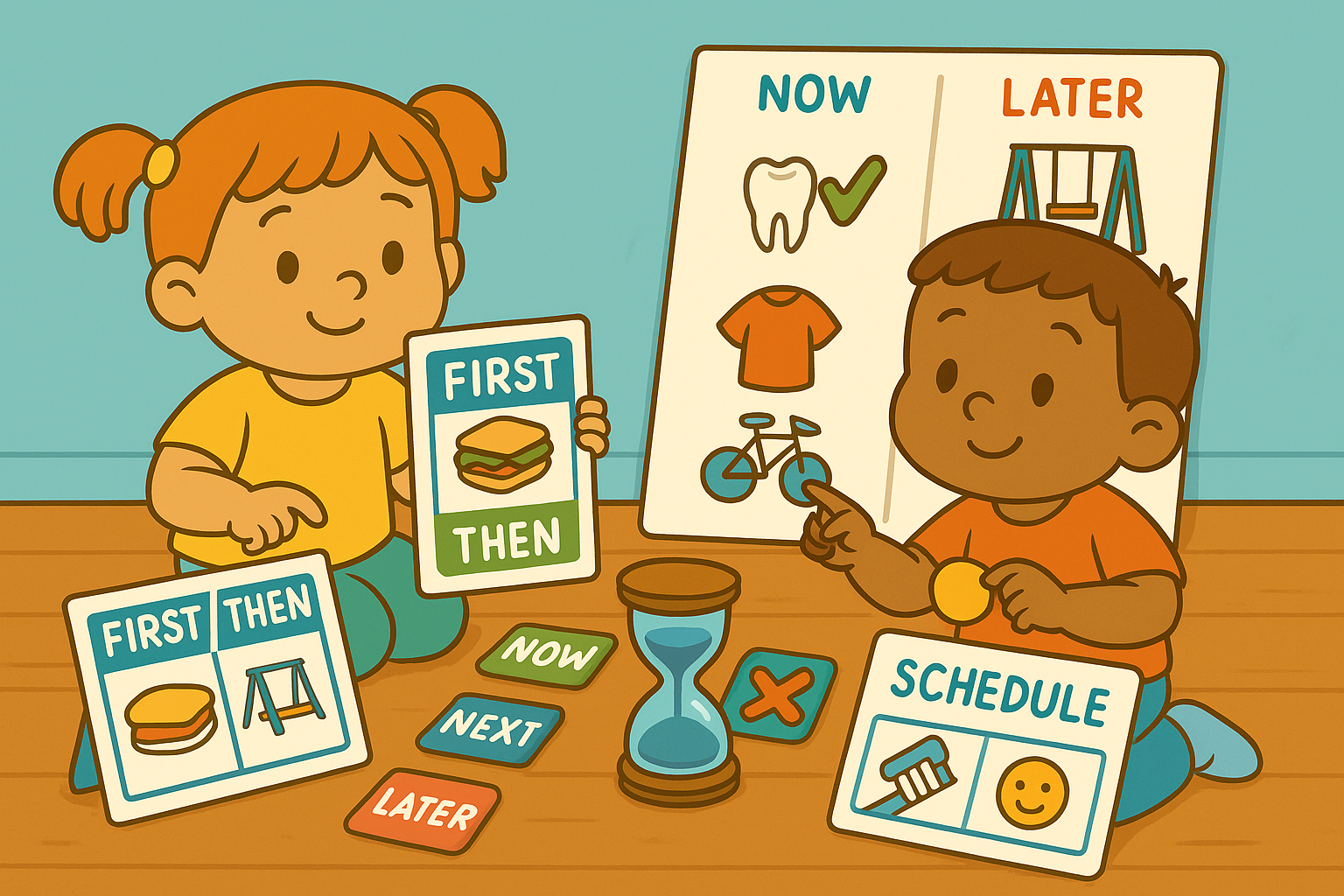Teaching Kids About Priorities Through Scheduling
Teaching Kids About Priorities Through Scheduling
Children don’t naturally understand priorities—those skills are learned through experience, modeling, and consistent daily routines. Scheduling isn’t just about time management; it’s about teaching children how to choose what matters most right now. And when scheduling is taught in a gentle, visual, and developmentally appropriate way, children begin to understand how time works—and how their choices shape their day.
Helping kids recognize priorities teaches them not just responsibility, but confidence. They learn that time is something they use, not something that happens to them. Over time, they begin to ask powerful questions: What should come first? What can wait? What needs more time? These are life skills—strengthened day by day through predictable scheduling habits.
Why Priorities Are Hard for Children to Understand
Children live in the present moment. This makes them imaginative and joyful—but it also makes planning difficult. Priorities feel invisible unless they are made concrete.
Why children struggle to prioritize:
Difficulty visualizing time
Difficulty shifting focus
Limited awareness of consequence
Emotional attachment to current activity
Underdeveloped executive function
That’s not misbehavior—it’s development. The goal is to teach, not force.
Predictability Helps Children See What Comes First
Before children can choose priorities, they must understand scheduling patterns. Predictability lowers stress and makes space for clear choices. This builds on ideas in The Role of Predictability in Reducing Childhood Anxiety, where routine supports emotional stability.
Ways to build predictability:
Visual schedule board
Morning/evening checklist
Rhythm-based daily flow (play → meal → cleanup)
Time blocks with visuals
Routine cues like music or lighting
When the structure is familiar, priorities become easier to understand.
Introducing the Concept of “What Needs to Happen First”
Children need the language of priorities before they can grasp the concept. Introduce helpful phrases that make priorities feel manageable.
Teach phrases like:
“What needs to be done before play?”
“What can wait until after snack?”
“Is this the best time for that?”
“Some tasks are quick—some take time.”
“Let’s choose what comes before and after.”
This mirrors gentle thinking seen in Building Independence Through Routine Choice, where decision-making supports confidence.
Using Visual Tools to Teach Priority
Visuals make priorities visible—and therefore understandable. Children need to see time before they can manage it.
Visual tools to try:
First/Then charts
Picture sequence cards
Hourglass or visual timers
Sorting tasks into “Now / Later” columns
Magnetic priority list on fridge
Sticker charts for “must-do’s” before “want-to’s”
These tools align with principles from Teaching Time Management Through Visual Clocks, where visual time guides self-management.
Making Scheduling Tangible With Objects
Physical objects help children comprehend scheduling concepts through hands-on experience.
Object-based scheduling ideas:
Place toys in bins labeled “morning” and “evening”
Use three boxes → “Now / Next / Later”
Build task order with blocks or cards
Separate tasks by color (urgent vs flexible)
Race the hourglass: what can fit inside this time?
Hands-on routines make priorities clearer than language alone.
Using Choice to Build Ownership
Children respond well to scheduling when they have a voice in the process. Choice offers agency—without losing structure.
Ways to offer scheduling choices:
“Which task should happen first?”
“Do you want to pick the timer for cleanup?”
“Which comes before snack—pajamas or teeth?”
“We have three things. Which should go at the top?”
Choice offers guidance—without taking over.
Understanding That Time Has Limits
Children need to learn that time runs out—and choices carry consequences. This realization can be taught gently through practice.
Ways to teach time limits:
“We have time for one more activity—pick wisely.”
“This timer shows how much playtime is left.”
“We can watch one show or build one tower. Which matters more today?”
Use sand timers to estimate how long tasks take
Priorities become visible when time becomes tangible.
Helping Children Plan the Day Ahead
Planning is a skill that takes time to develop. Start small—with manageable choices and clear routines. This builds on the family planning spirit seen in Family Planning Nights: Setting Goals Together.
Planning ideas:
Morning “day helper” chart
Evening preview of tomorrow's schedule
One task to move from “Not yet” to “Complete”
Visual routine led by the child
Whiteboard for next-day goals
Children don’t need full agendas—just gentle guidance.
When Plans Don’t Go as Expected
Schedules don’t always work perfectly—and that’s actually a valuable learning moment. Children learn that priorities shift, and that adaptability is part of maturity.
How to talk about changes:
“Sometimes plans change—and we can try again.”
“This part moved—but we still made space for it.”
“What mattered most still happened.”
“Let’s adjust and begin again.”
Schedules don’t need perfection—they need flexibility.
Signs That Priority Skills Are Developing
Independence builds gradually. Over time, children show small shifts in how they approach activities—and those shifts deserve celebration.
Signs of growth:
Asking what needs to come first
Beginning tasks without prompting
Noticing time naturally (“We’re late!”)
Accepting that some tasks wait
Taking pride in finishing
These moments represent early executive thinking—powerful and promising.
When Scheduling Builds Confidence
Eventually, scheduling becomes a tool—not a rule. Children begin to understand that priorities help life run more smoothly—and that they are capable of choosing well.
And that belief—quiet yet powerful—becomes the foundation for self-direction and lifelong capability.
This content is for educational purposes and is not a substitute for professional medical or psychological advice.
Popular Parenting Articles


